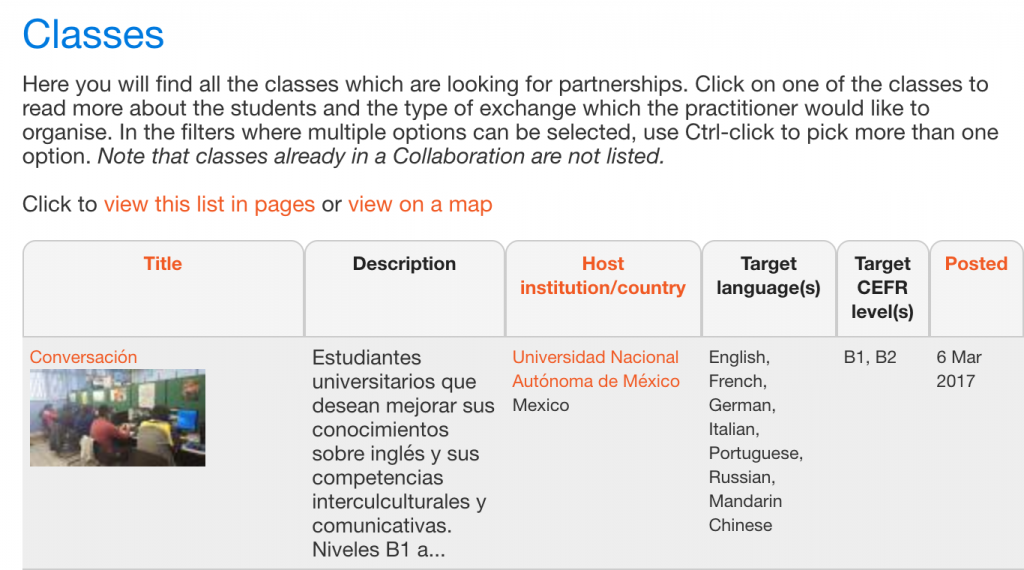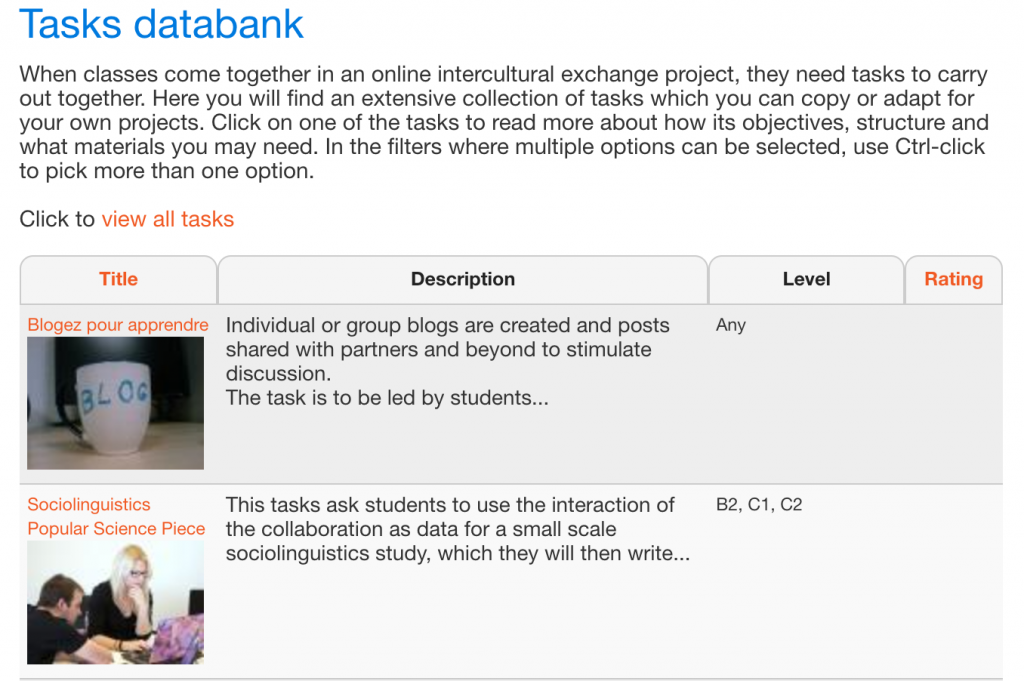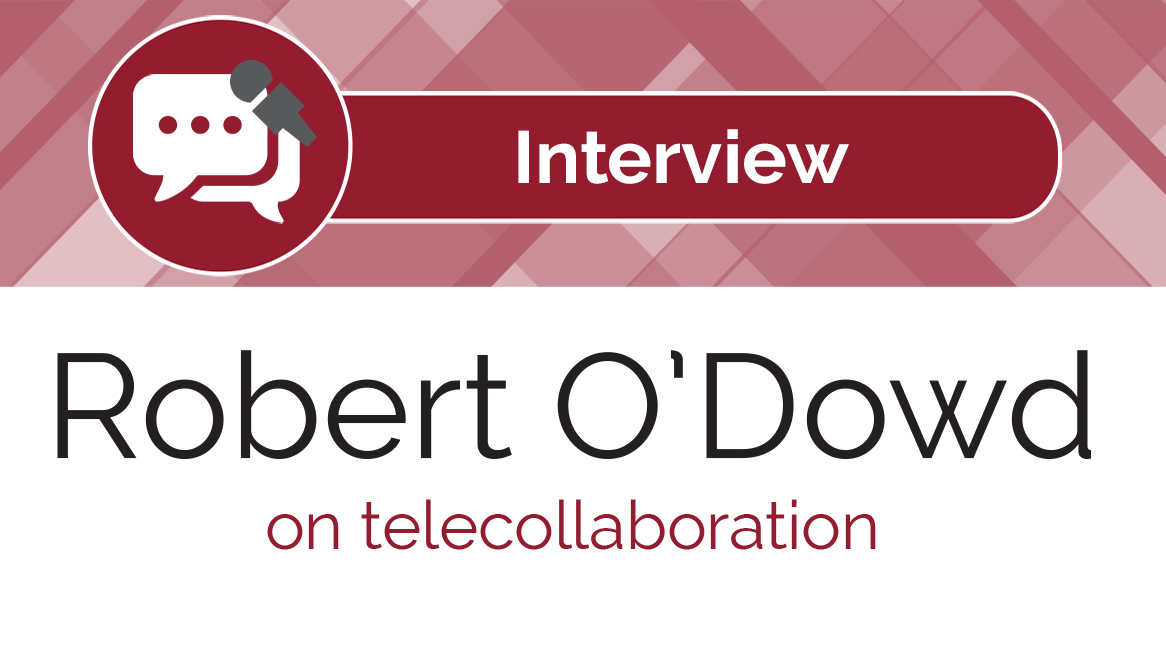Interview with Robert O’Dowd
 Interview by Naomi Wahls, eLearning Designer and Consultant at the Anderson Language & Technology Center at the University of Colorado Boulder.
Interview by Naomi Wahls, eLearning Designer and Consultant at the Anderson Language & Technology Center at the University of Colorado Boulder.
 Robert O’Dowd is an Associate Professor at the Universidad de León, Spain. He is an expert in Virtual Exchange and English medium Instruction.
Robert O’Dowd is an Associate Professor at the Universidad de León, Spain. He is an expert in Virtual Exchange and English medium Instruction.
Naomi: For those that are new to the concept of telecollaboration can you tell us what it is exactly and why you love connecting students?
Robert O’Dowd: The idea of telecollaboration, or as it’s becoming more commonly known nowadays “virtual exchange,” is the idea of linking up classes in different countries to work together on collaborative tasks and in that way to get them to develop their language skills, their intercultural skills, and their digital skills. I suppose the key elements are that there are groups of students in different countries that are participating, working on common tasks. So they are both trying to work to achieve the same thing. The second thing is that the teacher is involved by developing the tasks and by integrating the activities into the classroom and the third aspect would be that the students receive credit or recognition for their work in some way.
Naomi: What is the biggest challenge in telecollaboration?
Robert O’Dowd: Well I suppose there are many different challenges. Teachers come across many different challenges as they try to set them up. They find that, for example, it’s hard to find a partner that is teaching a similar subject or a subject that they want to link up on. Time differences can be a challenge when you want to link up, for example, classes in the United States with classes in Europe. Whenever we want to do, for example, Skype exchanges between students in my country in Spain and link them with students of Spanish that are working in the United States, well then of course it’s very very difficult to have a time when they can meet online. So that’s why very often teachers end up doing asynchronous exchanges. People send e-mails, or use online discussion forums, or GoogleDocs, instead of actually speaking together online. The second problem or third problem might be the issue of getting students credit. Teachers very often have to write their study programs, their course guides, maybe a year in advance of the course, so they need to know if there is going to be an exchange, who it’s going to be with, what percentage of the mark should go to these projects, etc.
Naomi: What was your first telecollaboration exchange?
Robert O’Dowd: I actually carried out my first virtual exchange I think in 1999. So seventeen years ago, and there I did a videoconference exchange between my students here in Spain that are studying English with students in America. I’m afraid I can’t remember the actual name of the university or the teacher that was involved as it was a long time ago, and we used to get them to do group to group video conferencing. Since then I have worked in Germany and I did my PhD all about this, and I researched the intercultural learning outcomes of these projects and I’ve been researching it ever since basically. And more recently what we have done is we’ve had some European funding from projects about this and we’ve also been able to set up an academic organization, “unicollaboration.org.” Where teachers all over the world can join and become part of an academic network, where we research and work on this topic together.
Naomi: What advice would you give for anyone looking for their first telecollaboration partner?
Robert O’Dowd: Well, the first advice I suppose is to have clear idea of what your goals are. What do you want? Are you a language teacher? Well then if that’s the case you need to obviously find a partner class in maybe that country, but it doesn’t necessarily have to be in that country. For example, I teach English as a foreign language. So I suppose the most natural partners I would have would be based in the British Isles, in Ireland and the UK, or in the USA. However, I’ve done a lot of exchanges where my students are working with other non-native speakers that are based in Germany, Israel, Sweden, many other countries, Hungary this year as well. These exchanges work as well because here you don’t have to have half the exchange in English and half the exchange in Spanish. In these exchanges everything works in English. Of course, the negative aspect of that is that my students don’t get to talk to good native speaker English but an argument is that nowadays, when my students leave college and start work, they’re going to be working in a world where lots and lots of people are using English even though they are not native speakers. So they’re getting used to that kind of world, that kind of environment.
Naomi: So a telecollaboration project where a class learning Spanish in the US connects with a class learning Spanish in Japan would be a fine set up?
Robert O’Dowd: Well, that’s exactly what I’ve just been talking about. These have benefits because there’s lots and lots of Spanish being used. The negative side, shall we say, is that there is no model, or correct model but the teacher can come in and read and listen to what’s going on and provide feedback on the grammar and the vocabulary being used. So you could even have three classes connecting: a Spanish class in the US, a Spanish class in Japan, and an English class in Mexico or Spain for example. Again, all of these setups are possible. There is no one right way to do this and what’s very interesting nowadays is that you’ll see in the United States especially lots and lots of classes actually, they aren’t language classes working together online. They call this sometimes “COIL”: Collaborative Online International Learning, but it’s the same concept of connecting a class of engineering students together, or science students together, or social studies students together from different countries and working on common projects together. You know, all of these possibilities are there, but the key is that the teachers are involved, that the teachers take a key role in setting up the exchange, in planning tasks that will lead to genuine collaboration, and not simply just exchanging facts and things like that, which is quite limited and that these teachers also integrate these exchanges and their interactions into the classrooms and help the students write their messages, prepare their surveys, prepare their projects, and, you know, link it to what is happening in class. That is the key to success in all of these projects.
Naomi: Would you like to share anything else with us?
Robert O’Dowd: Well, I mentioned unicollaboration.org, which is our academic organization for research and for teacher training. We also provide training for universities that are interested in learning about this, but we also have another platform called uncollaboration.eu. I’d like you to maybe mention that and show some screenshots from that platform because in that platform in the “classes” section, if you go to unicollaboration.eu and look at the “classes” section, there you’re going to find hundreds of teachers that are looking for partners.

In the “tasks” section you’re going to find hundreds of different tasks that teachers can use in these projects. So that’s a really good resource I think for people that are starting off that want to learn more. It’s free to join. It’s not a money-making venture at all and I think that’s a good starting point for teachers who want to know more. There’s a “training” with videos, with advice from practitioners, and so there’s lots there. We also have a conference about this every two years. The next one will be in Poland in Krakow in 2018 and you can find more information on the website. So I hope this has been helpful for you and useful. If you have any follow up questions, please use the comment box below.



